Abstract
In discrimination learning, the negativity of the stimulus correlated with nonreinforcement (S−) declines after 100 training trials while the stimulus correlated with reinforcement (S+) is paradoxically more positive with lesser amounts of discrimination training. Training subjects on two simultaneous discrimination tasks revealed a within-subjects overlearning reversal effect, where a more-frequently presented discrimination problem was better learned in reversal than was a discrimination problem presented less frequently during training.
Full text
PDF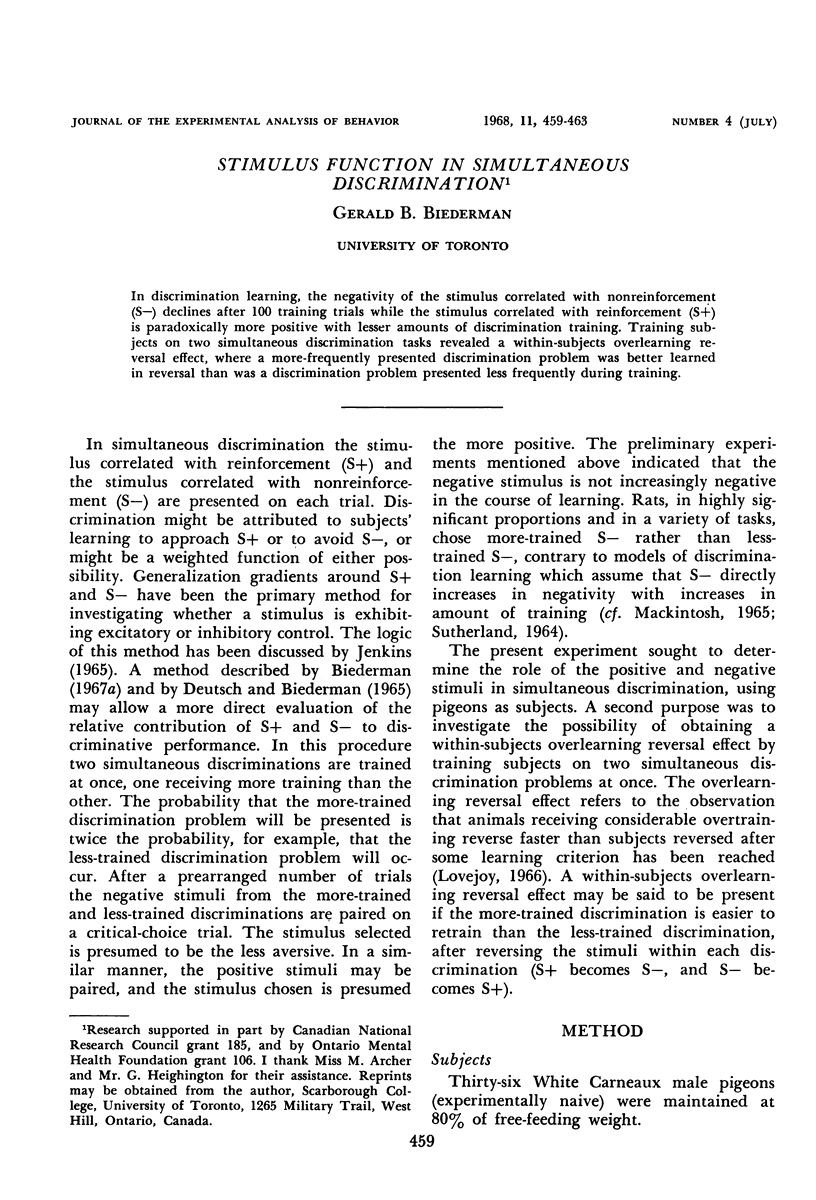
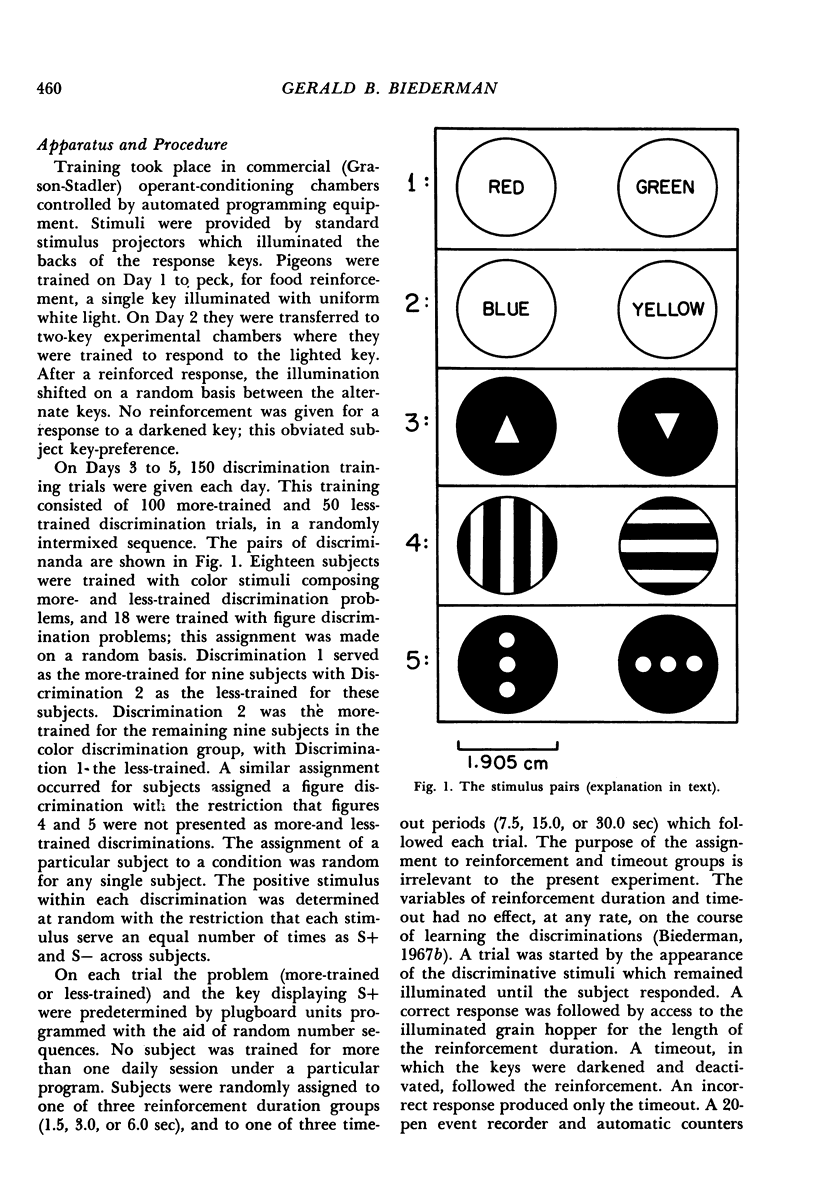
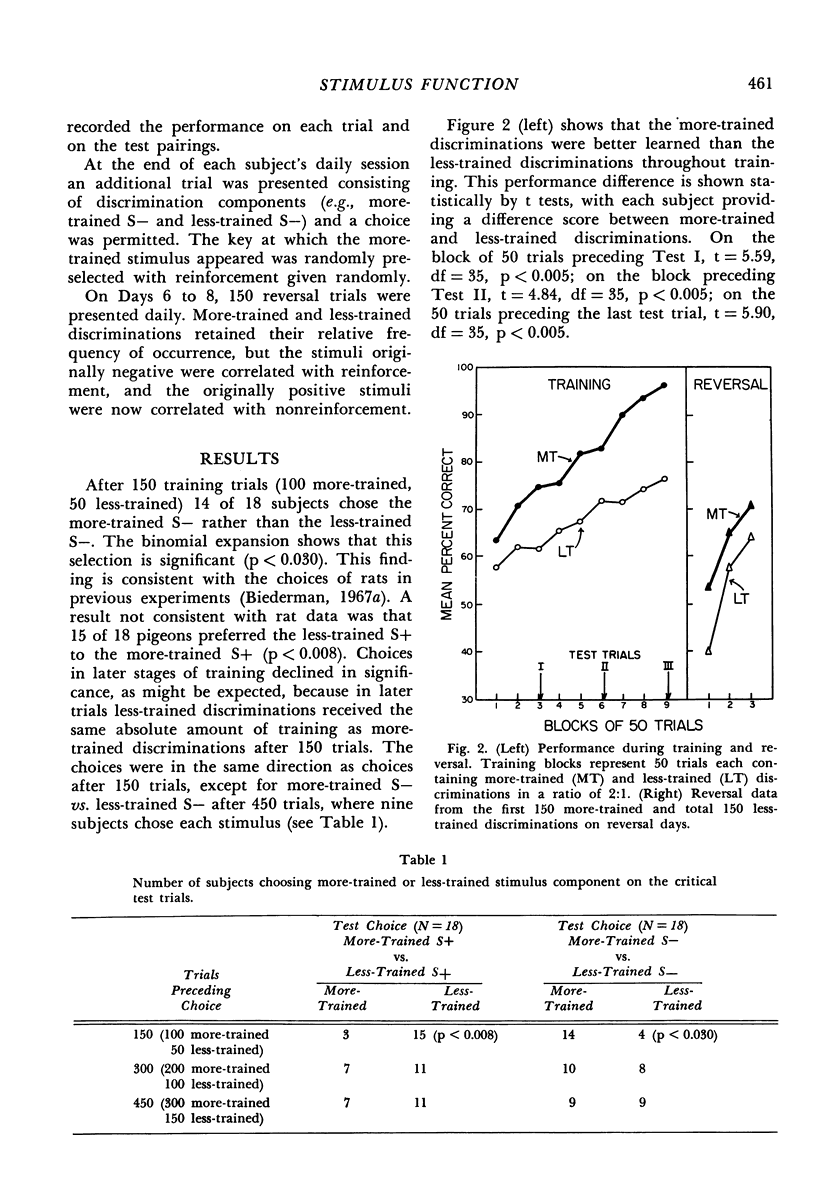
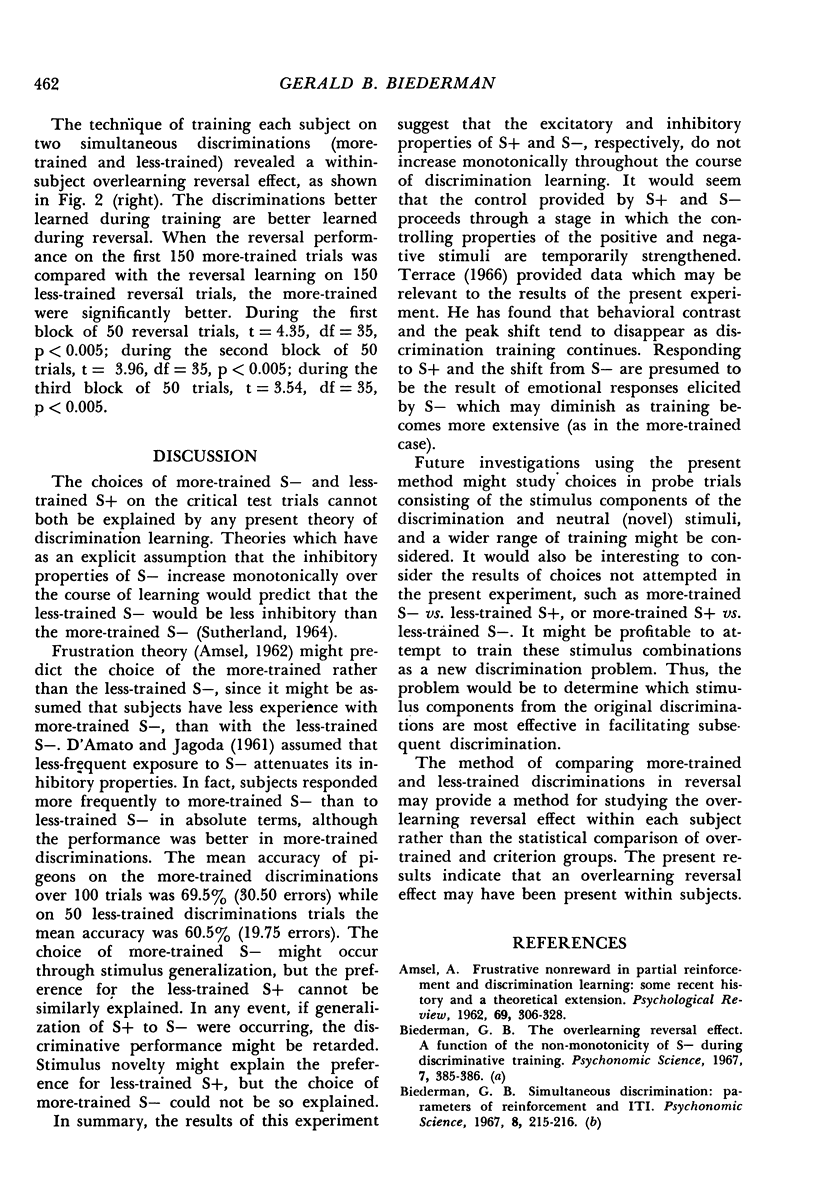
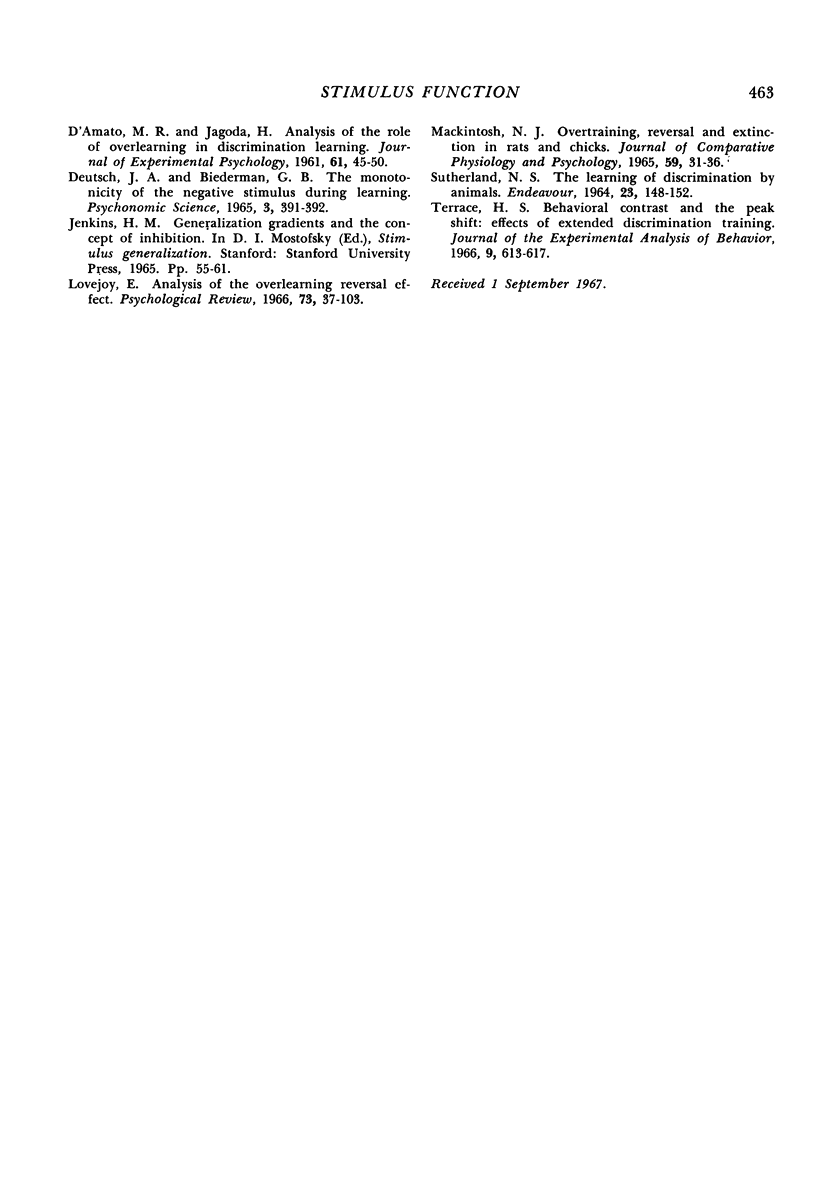
Selected References
These references are in PubMed. This may not be the complete list of references from this article.
- AMSEL A. Frustrative nonreward in partial reinforcement and discrimination learning: some recent history and a theoretical extension. Psychol Rev. 1962 Jul;69:306–328. doi: 10.1037/h0046200. [DOI] [PubMed] [Google Scholar]
- D'AMATO M. R., JAGODA H. Analysis of the role of overlearning in discrimination reversal. J Exp Psychol. 1961 Jan;61:45–50. doi: 10.1037/h0047757. [DOI] [PubMed] [Google Scholar]
- Lovejoy E. Analysis of the overlearning reversal effect. Psychol Rev. 1966 Jan;73(1):87–103. doi: 10.1037/h0022687. [DOI] [PubMed] [Google Scholar]
- MACKINTOSH N. J. OVERTRAINING, REVERSAL, AND EXTINCTION IN RATS AND CHICKS. J Comp Physiol Psychol. 1965 Feb;59:31–36. doi: 10.1037/h0021620. [DOI] [PubMed] [Google Scholar]
- SUTHERLAND N. S. THE LEARNING OF DISCRIMINATIONS BY ANIMALS. Endeavour. 1964 Sep;23:148–152. doi: 10.1016/0160-9327(64)90007-9. [DOI] [PubMed] [Google Scholar]
- Terrace H. S. Behavioral contrast and the peak shift: effects of extended discrimination training. J Exp Anal Behav. 1966 Nov;9(6):613–617. doi: 10.1901/jeab.1966.9-613. [DOI] [PMC free article] [PubMed] [Google Scholar]


